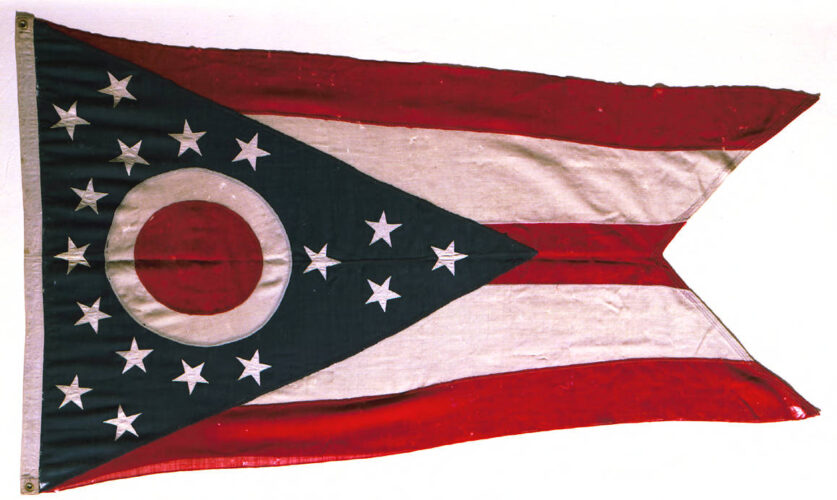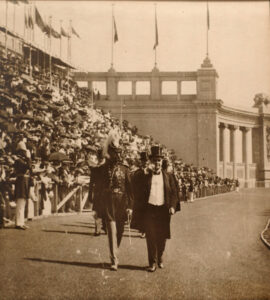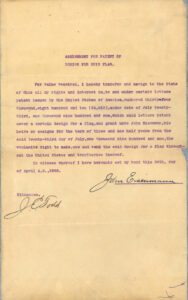A Swallowtail What? The History of Ohio’s State Flag

Many Ohioans are familiar with our state symbols, especially the state bird (cardinal), the state tree (Ohio buckeye), and the state flag. But do you know how the state flag came to be?
For its first ninety-nine years of statehood, Ohio did not have an official state flag. The situation began to change in 1901 with the Pan-American Exposition held in Buffalo, New York. Cleveland architect John Eisenmann was chosen to design the Ohio Building for the exposition. Because Ohio didn’t have a state flag, Eisenmann designed one and registered it with the U.S. Patent Office. The flag flew at all four corners of the Ohio building for the duration of the event.
However, tragedy struck when Ohio native and second-term U.S. President William McKinley was assassinated while visiting the exposition. McKinley, who had served in the Civil War and in the U.S. Congress before becoming president, delivered a speech on September 5. (This is likely when the photo shown below was taken.) The following day the President was greeting members of the public at one of the exposition buildings when he was shot twice by Leon Czolgosz, an anarchist. The bullet wounds became infected, and McKinley died on September 14, 1901. Five years later, Congress passed legislation giving the Secret Service official responsibility for protecting the president.

On May 9, 1902, the flag that flew over the Ohio Building during the Pan-American Exposition was adopted as the official state flag. All other U.S. state flags are rectangular, but Eisenmann designed a pennant-shaped flag called a swallowtail burgee to represent Ohio. Burgees are triangular flags that have been used to identify boats since the rise of British yacht clubs in the 1800s. Swallowtail burgees have a V-shaped cutout on the narrower end, giving the flag two points instead of just one.

The symbols on the flag are based on imagery in the state seal:
- The triangles formed by the main lines of the flag represent Ohio’s hills and valleys, while the stripes represent Ohio’s roads and waterways.
- The stars indicate the thirteen original states of the U.S. and are grouped around a circle, which symbolizes the Northwest Territory. Four additional stars indicate that Ohio was the seventeenth state to enter the young nation.
- The white circle with the red center also represents the first letter of Ohio and suggests a buckeye.
You can visit this 2015 Ohio Memory blog post to see a photo of the Ohio Building (including Eisenmann’s flag) and read the program for “Ohio Day” at the exposition. Long may our swallowtail burgee wave!
Thank you to Stephanie Michaels, Research and Catalog Services Librarian at the State Library of Ohio, for this week’s post!



Leave a Reply
You must be logged in to post a comment.